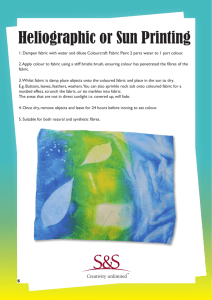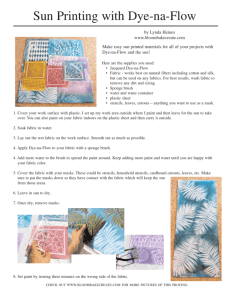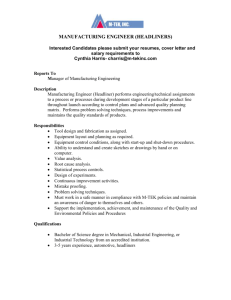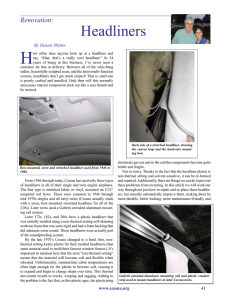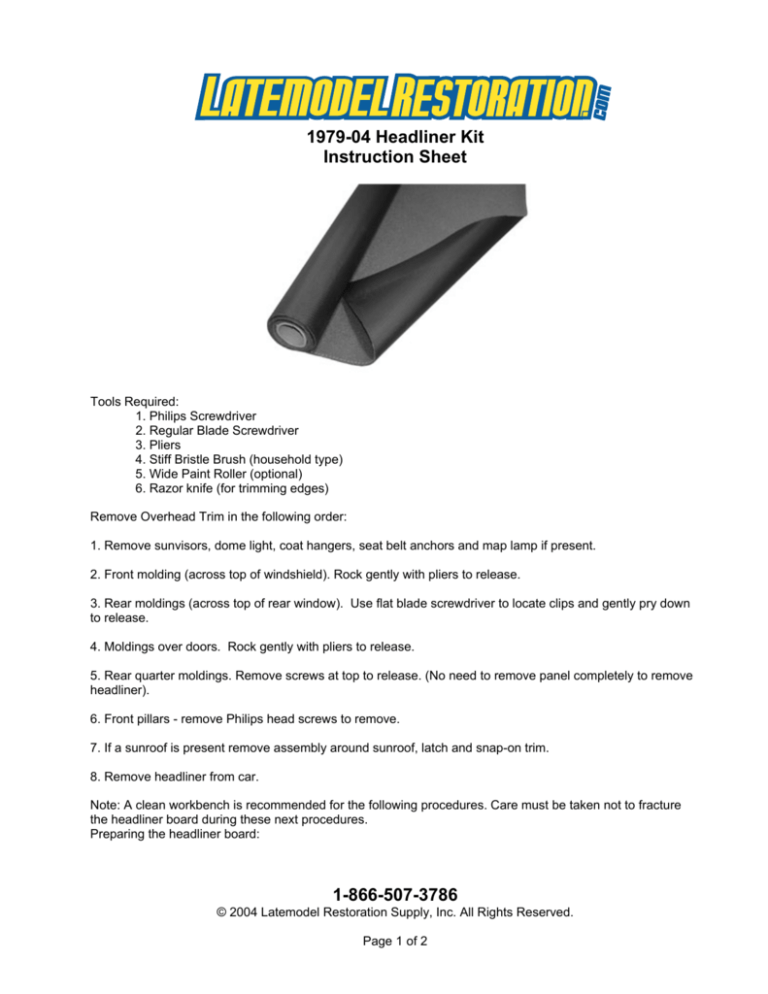
1979-04 Headliner Kit
Instruction Sheet
Tools Required:
1. Philips Screwdriver
2. Regular Blade Screwdriver
3. Pliers
4. Stiff Bristle Brush (household type)
5. Wide Paint Roller (optional)
6. Razor knife (for trimming edges)
Remove Overhead Trim in the following order:
1. Remove sunvisors, dome light, coat hangers, seat belt anchors and map lamp if present.
2. Front molding (across top of windshield). Rock gently with pliers to release.
3. Rear moldings (across top of rear window). Use flat blade screwdriver to locate clips and gently pry down
to release.
4. Moldings over doors. Rock gently with pliers to release.
5. Rear quarter moldings. Remove screws at top to release. (No need to remove panel completely to remove
headliner).
6. Front pillars - remove Philips head screws to remove.
7. If a sunroof is present remove assembly around sunroof, latch and snap-on trim.
8. Remove headliner from car.
Note: A clean workbench is recommended for the following procedures. Care must be taken not to fracture
the headliner board during these next procedures.
Preparing the headliner board:
1-866-507-3786
© 2004 Latemodel Restoration Supply, Inc. All Rights Reserved.
Page 1 of 2
1979-04 Headliner Kit
Instruction Sheet
In order for the new fabric to bond properly to the headliner board all remnants of the old foam and fabric
must be removed. Some areas if not all of the headliner fabric have probably started to separate from the
headliner board. If the fabric does not readily peel away from the board use a stiff bristle (household type)
scrub brush in a circular motions to break down and clear away the remaining foam. Be very careful not to
peel away layers of the headliner board itself when peeling the fabric off.
Note: If areas of the board are fractured it may be necessary to rebuild it with duct tape applied to the
backside of the board. If the duct tape does not seem to stick well spray the area to be taped with contact
cement for better adhesion. A whiskbroom should remove the final traces of dust. Test the prepared surface
by gently rubbing your hand over it. You should not see or feel any traces of the old foam back material on the
board. If duct tape does not restructure the foundation of the headliner board, layers of very thin cardboard
may be cut and layered on top of each other using contact cement until the board is adequately strengthened.
Applying headliner fabric to the headliner board:
Note: The centerline drawn on the back of the fabric. For ease of installation a centerline should be drawn on
the headliner board with a pencil or chalk for a quick reference point. The contact adhesive must be applied
both to the headliner board and to the backside of the fabric. Apply adequate amounts of adhesive to insure a
good bond. However, keep the can moving steadily when applying to prevent any puddling of the adhesive.
Allow a few minutes after applying the adhesive for it to start to set up (it should get tacky to the touch). Then
fold the fabric in half along the centerline (glue side out). Carefully align the centerline on the fabric with the
centerline on the board. Gently apply the fabric to the board from the centerline out stretching the fabric
slightly, but not overly tight, to avoid wrinkles. Be very careful not to press on the fabric over the board until
the glue is dry as the wet glue will stick the foam together and leave finger or hand prints in the material. A
wide paint roller can be used to apply the fabric.
Expect a few inches of excess fabric to be hanging over the edges of the board. Trim this excess fabric flush
with the edge of the board. Note cutouts in headliner board for sunvisor mounts, dome light seatbelt anchors.
Trim headliner fabric out of these cutouts, leaving approximately 1/2" of fabric extending out from the edges of
the cutouts, toward the center of the hole. Upon completion allow the board to set for two hours to insure a
good bond then replace the headliner in the car by reversing the steps above.
1-866-507-3786
© 2004 Latemodel Restoration Supply, Inc. All Rights Reserved.
Page 2 of 2




